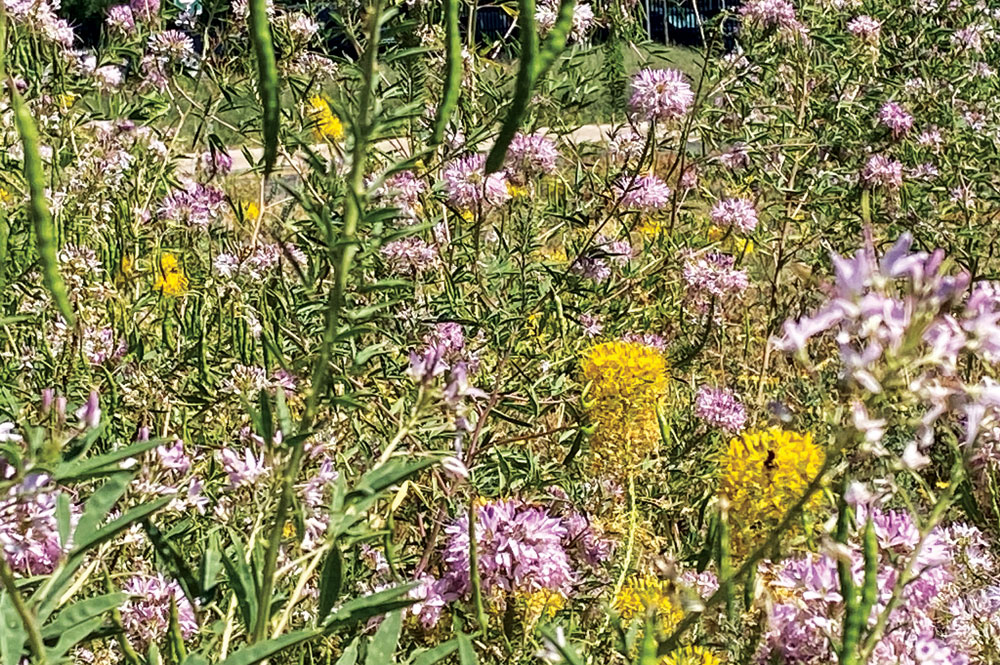
A sign marks the area near MLK Jr. Blvd. and Quebec St. where native plants now cover the median area.
They say beauty is in the eye of the beholder, and that saying rings true along Quebec St. north of MLK Jr. Blvd. in Central Park.
A 10-acre stretch of three medians that used to be covered in high-maintenance, high-water-usage bluegrass is now a site for native plants and pollinators. But the City of Denver has received complaints from nearby residents who think the area has been neglected and taken over by weeds.
Jessica Andersen, Denver Parks and Recreation’s urban ecology supervisor, wants people to understand the site is “not ignored” and is “very much being maintained.” She says this project is a little different from others in the city and the wildflowers do “look a little bit messier.”

A close up of the native plants and pollinators covering 10 acres of median space once landscaped with high-maintenance, high-water-usage bluegrass.
Andersen notes the previous maintenance of the area involved a contractor “mowing and leaving.” The site now gets a lot more attention as a “contractor is out there at least once a week, inventorying what’s happening, treating different species, and timing weed treatment correctly. Also monitoring what’s growing, what the good plants are on site, and really giving it a lot more attention than it used to get.”
There’s also a water conservation story behind the project, which was paid for by the Colorado Water Conservation Board, the Denver Water Department, and Denver Parks and Recreation (DPR). Andersen says in 2022, 10.5 million gallons of water was used over the median area. During the first year of the new project, that number was 2 million gallons.
The Quebec Landscape Transformation Project was planted in 2023. The seeds were planted around Labor Day with a goal of putting in four different types of seed mix in different areas. Each mix contains about a dozen different species of grasses and wildflowers, most of which are native to Colorado.
The project is one of several across the city as part of the “It’s in Denver’s Nature” campaign—DPR’s efforts to adapt the city and parks to a changing climate. Some transformations are smaller in other park spaces and there are also many existing spaces filled primarily with native grasses, especially in the Central Park area. The idea is to identify what the City calls the most “underutilized bluegrass lawns and transform them into spaces for plants and pollinators and birds.”
The area will be mowed in early October. The perennials that were planted will be back next year, along with more seeds and plants in some of the barren areas.


0 Comments